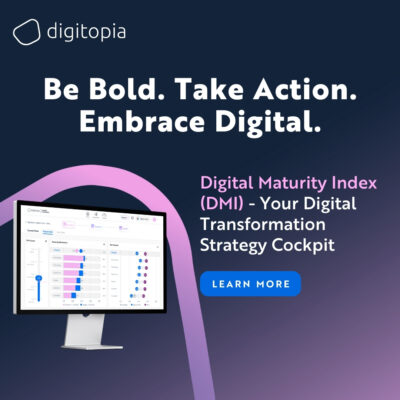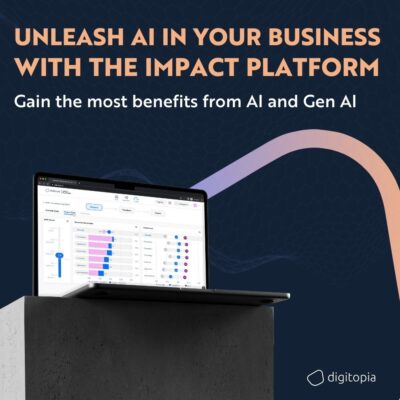
Rachel Vargas stood at the head of a bustling conference room, confident in her plan to revolutionize her company’s outdated customer relationship management (CRM) system. As Senior Director of IT at a major consumer goods firm, she had built her career on decisive action and firm direction. People admired her high-performance track record—she’d launched an ambitious e-commerce platform on time and rescued a failing data center migration. Now, charged with replacing an archaic CRM, Rachel believed her no-nonsense, top-down leadership style would once again guarantee success.
But the corporate environment had changed since her last big victory. New hires brought fresh perspectives, business units had more autonomy, and an undercurrent of resistance to rigid authority was growing. Enter Isabel Negrón, a newly appointed project manager and data specialist ten years Rachel’s junior. Though quieter than Rachel, Isabel had proven herself adept at stakeholder engagement in previous roles. She believed that empathy, collaboration, and iterative wins led to more sustainable outcomes. Set against the tight deadlines and massive scope of this CRM overhaul, these two women—both talented, both ambitious—would collide in their leadership styles, shaping a project that would test not just their skills but also the company’s ability to adapt.
The Push for a New CRM
Consumer preferences were shifting rapidly, and the company’s sales and marketing teams needed more sophisticated data analytics to respond effectively. The existing CRM was fragmented and outdated, lacking integration with social media and e-commerce channels. Sales reps often complained about slow interfaces and incomplete customer data, while marketing argued that the system couldn’t handle targeted campaigns.
The executive committee gave the project a 10-month window—tight for an enterprise-scale CRM implementation. They entrusted overall direction to Rachel, believing her track record of on-time deliveries fit the urgent timeline. She accepted without hesitation, promising an aggressive plan that would meet every milestone. Isabel, meanwhile, joined the initiative to oversee data migration and user adoption, a seemingly less glamorous role but one that would prove crucial.
Pressure from the Top
While the top brass spoke in glowing terms about “customer-centric transformation,” they also impressed upon Rachel that cost overruns weren’t an option. Some executives had grown skeptical of large IT projects that frequently consumed more resources than initially budgeted. Feeling the heat, Rachel cut slack from her timeline, aiming to present a crisp, all-inclusive package that left little wiggle room.
Isabel felt uneasy about how rigid the schedule seemed. From past experience, she knew a CRM of this scale needed iterative testing and user feedback. But when she expressed concerns at an early planning session—highlighting potential training and data governance pitfalls—Rachel dismissed them:
“We can’t afford indefinite refinements, Isabel. The board wants deliverables, not endless prototypes.”
Thus, the project kicked off with a plan that looked good on paper—until people started trying to make it work in the real world.
Rachel Vargas’ Dominant Approach
Rachel wasted no time setting strict policies and deadlines:
No Deviation from the Master Plan
She forbade department heads from requesting any new features beyond the initial specification, fearing scope creep could derail the schedule.
Daily Sync, Minimal Debate
She instituted a rapid-fire daily update meeting, discouraging protracted discussions and urging participants to “take it offline” if issues arose. The result was that many concerns went unaddressed.
Tight UI/UX Constraints
Although the sales and marketing teams begged for a user-friendly interface, Rachel insisted the new CRM replicate legacy workflows to save time on training.
The Silence in the Ranks
While some staff admired Rachel’s decisiveness, others felt steamrolled. Business analysts wanted deeper involvement in requirements gathering; test engineers complained the schedule left minimal room for regression testing. They quickly learned that pushing back on Rachel’s plan was risky.
For example, when a lead developer flagged that real-time data syncing with social media would require a new API approach, Rachel brushed it off: “We don’t have time for major architecture changes. Make do with what’s in scope.” The developer quietly complied, implementing a workaround that—unbeknownst to Rachel—would become a massive technical debt item later.
Meanwhile, sales managers complained that the proposed interface lacked critical tools for mobile workflows. Rachel doubted the necessity of these features, calling them “nice-to-haves” and reminding them the old CRM never had mobile optimization either. As friction grew, staff morale sank. People either stayed silent to avoid confrontation or secretly prayed for a shift in leadership tactics.
Isabel Negrón’s Empathetic and Strategic Style
In contrast to Rachel’s top-down commands, Isabel engaged people one-on-one or in small groups, listening to their specific problems and uncertainties. She believed that gathering diverse input would ultimately save time by preventing major rework. She took the initiative to:
Host Informal Feedback Sessions
Through coffee chats and short Zoom calls, she learned frontline concerns about data consistency, slow queries, and missing fields crucial for advanced analytics.
Bridge Technical and Business Silos
Knowing how easily misunderstandings fester in large organizations, she convened cross-functional mini-workshops, letting marketing specialists talk directly to the dev team about campaign triggers.
Highlight User-Centric Wins
Isabel praised each department’s insights, forwarding them to the right teams and occasionally updating Rachel about pressing issues that needed immediate escalation.
Finding Overlooked Risks
During her sessions, Isabel discovered crucial blind spots:
Data Quality Gaps
Marketing relied on external lead lists often riddled with duplicates. Merging these seamlessly into the new CRM demanded robust data cleaning scripts—something the official project plan mentioned only vaguely.
Underestimated Training Needs
Sales reps had grown accustomed to the old CRM, however flawed. They faced a steep learning curve with any new interface, but Rachel’s plan allocated a mere two weeks for training across 500 global users.
Server Performance Constraints
The existing hardware, slated to host the new CRM, lacked the horsepower for real-time analytics, a request marketing had repeatedly emphasized.
Isabel worried about how to address these concerns without triggering Rachel’s ire. The tension in daily stand-ups made her wary of openly challenging the Senior Director in a group setting. Instead, she chose to compile her findings into a “Risk and Recommendation” report, sharing it privately with Rachel. While she hoped for dialogue, the response came back curt:
“If we open the floodgates for every potential risk, we’ll never meet deadlines. Let’s keep moving.”
Escalation: The Executive Review That Changed Everything
Halfway through the schedule, the CRM migration was falling behind. Quality assurance teams flagged major issues in data import scripts. Sales managers grumbled about how the new system felt clunky and incomplete. Worst of all, e-commerce integration was behind by three weeks. Sensing an impending crisis, the COO requested an executive review.
Rachel’s Public Front
In the review, Rachel projected unwavering confidence:
“We’re meeting our milestones. Any snags are routine. We’ll have a polished release on schedule.”
Executives, eager for good news, seemed relieved. But the CFO pressed for details on how e-commerce data would sync in real time, concerned about potential downtime and lost sales.
Rachel sidestepped: “That’s in the final sprint. Our engineers assure me it’s doable.”
Isabel’s Intervention
Isabel, present as a supporting project manager, decided she couldn’t remain silent. Summoning her courage, she elaborated on the overlooked complexities:
Real-time integration required re-architecting multiple APIs.
Data synchronization was failing initial tests due to legacy system constraints.
Training was dangerously short, risking widespread user confusion post-launch.
The CFO listened intently, asking for specifics. Rachel attempted to steer the conversation back to her summary slides, but Isabel’s calm, fact-based explanation piqued executive curiosity. The COO asked for a special follow-up meeting to address these “critical vulnerabilities.”
Rachel felt blindsided. After the session, she confronted Isabel in private, saying:
“If you had concerns, you should’ve come to me before airing them in front of the execs.”
Isabel apologized for any perceived undermining but insisted her loyalty lay with the project’s success, not just appearances. Rachel, visibly frustrated, dismissed the conversation, warning Isabel not to stir the pot.
The Spiral of Dominance
The tension erupted within days. Rachel doubled down:
Enforcement of “All-Ours” Mindset
She demanded teams skip certain test cycles to catch up on missed coding milestones.
Locking Down Scope
She halted all new feature requests, even those essential for user adoption—like basic sales pipeline modifications.
Blaming Underminers
In a tense staff meeting, she called out “internal sabotage,” implying that certain individuals (Isabel included) were jeopardizing timelines by raising too many risks.
Consequences of Fear
Developers, alarmed by this rhetoric, avoided open communication. They quietly implemented stop-gap solutions for e-commerce integration. QA testers shortened their test scripts to keep pace, missing entire use-case scenarios. Over in sales, managers grew disenchanted, certain the final system would prove unworkable.
Meanwhile, Isabel continued her low-profile data sessions. She suspected the CRM might collapse under production load if real-time integration remained flawed. Anecdotal feedback hinted that marketing’s advanced segmentation wouldn’t function without certain data fields. The product itself teetered on the brink of fiasco, but official project metrics—burndown charts, partial test results—still painted a rosy picture, partly because people feared reporting real setbacks.
A Brewing Crisis and the Need for Change
Three weeks before the scheduled go-live, a pilot test in a regional sales hub revealed shocking problems:
- 90% of leads lacked complete data for the advanced segmentation feature.
- The real-time e-commerce connection broke after moderate usage.
- Mobile support crashed whenever multiple users accessed the CRM concurrently.
Panicked calls from the regional team reached executive ears, who demanded an urgent status meeting. Rachel tried to deflect, citing “pilot anomalies,” but the meltdown was too big to ignore.
A High-Stakes Executive Briefing
The CIO, CFO, and COO convened again, summoning Rachel and key stakeholders—including Isabel. This time, the data was irrefutable. The pilot logs showed repeated server crashes and incomplete lead entries. Marketing leadership pointed out their months-long warnings about data integration. Sales leaders threatened mass user revolt if forced to adopt the system as-is.
Faced with undisputed facts, Rachel found her credibility waning. Seeking a scapegoat, she claimed the data migration team (where Isabel operated) had failed to deliver clean data. Isabel calmly countered with logs detailing discrepancies in requirements, last-minute patches, and a lack of full user acceptance testing. She also presented a retooled timeline, proposing:
- A short delay of 4–6 weeks
- Additional sprint cycles for targeted bug fixes
- A robust training period
- Enhanced hardware or cloud resources for real-time analytics
- Leadership Shifts
The executives, frustrated by Rachel’s apparent lack of transparency, mandated changes in the project leadership structure. They tasked Isabel with coordinating rescue sprints, supported by a cross-functional “action group.” Rachel retained her Senior Director title but was effectively removed from daily project oversight. It was a public signal that the company valued constructive problem-solving over forceful command.
Isabel’s Empathy in Action
With renewed authority, Isabel wasted no time:
Immediate Transparency
She opened up a new communication channel—twice-weekly user feedback sessions—inviting direct input on the CRM’s performance and usability.
Involving All Stakeholders
Marketing was included in data model decisions; sales reps had a say in UI mockups; developers had a seat in priority-setting meetings.
Fixing Critical Gaps
Data cleansing scripts were integrated early in each sprint. E-commerce connections were refactored to handle concurrency, with real user simulations before final deployment.
Rebuilding Morale
Within days, the team’s morale lifted. Test engineers felt recognized, developers reported fewer “urgent last-minute changes,” and sales managers appreciated that their concerns about mobile functionality were finally being addressed. Even marketing began championing the project publicly. Isabel made sure to credit Rachel’s original big-picture drive, but it was clear the atmosphere had shifted to one of open dialogue.
Final Implementation and Long-Term Effects
Three months past the original deadline, the CRM rolled out enterprise-wide. While the delay disappointed some executives, the results:
Stable E-Commerce Integration
Real-time product syncing worked reliably, leading to fewer abandoned carts and higher cross-selling revenue.
Cleaner Data and Enhanced Segmentation
Marketing ran successful targeted campaigns, praising how quickly they could filter leads in the new system.
Better User Adoption
Comprehensive training minimized confusion, and user acceptance soared once employees saw the system’s improved functionality and intuitive design.
The cost overrun remained modest—much smaller than if the system had launched prematurely, forcing emergency fixes or risking reputational damage. By capturing user needs and re-aligning the technology to support them, the CRM stood poised to become a backbone of future customer initiatives.
Aftermath for the Two Leaders
Rachel’s Reflections: Though still a formidable presence in IT, Rachel faced internal criticism about her inflexible approach. She was asked to attend leadership coaching focused on emotional intelligence and stakeholder engagement. Over time, she began to incorporate more listening sessions and delegated some decisions to her teams, acknowledging the flaws in her previous style.
Isabel’s Rising Influence: Her success in rescuing the CRM elevated her standing. The COO praised her “methodical empathy,” awarding her a special recognition for cross-departmental leadership. Isabel accepted a newly created role—Director of Integrated Systems—where she’d apply similar tactics to unify the company’s data ecosystem further.
Lessons Learned: Two Paths, Two Outcomes
The clash between Rachel Vargas and Isabel Negrón reveals deeper insights into how leadership styles can make or break a complex tech initiative:
Decisiveness Without Empathy Breeds Resistance
Rachel’s authoritarian directives delivered short-term compliance but concealed major risks. Fear-driven teams often hide problems, leading to bigger breakdowns later.
Listening and Inclusivity Drive Sustainable Results
Isabel’s approach—hosting feedback sessions, validating concerns, iterating solutions—ensured the CRM ultimately met real-world needs.
Human-Centric Schedules Trump Rigid Plans
While firm deadlines can motivate, they shouldn’t suffocate essential testing and user input. Adding limited cushion for feedback loops can avert meltdown.
Transparent Communication Is Non-Negotiable
Keeping executives or user groups in the dark fosters mistrust. Timely, accurate reporting of risks and progress fosters unity in problem-solving.
Shared Wins, Shared Credit
Isabel recognized individual contributions, enhancing morale and ownership. Rachel’s initial reluctance to acknowledge her team’s ideas stifled creativity and loyalty.
Harnessing Empathy to Power Transformation
Rachel and Isabel were both highly capable technologists aiming to modernize a failing CRM. The difference lay in how they led people. Rachel’s dominance nearly derailed the project through rigid deadlines, suppressed feedback, and a fixation on short-term optics. Isabel’s gentler but strategic leadership revived morale, uncovered hidden issues, and aligned technical solutions with user demands.
Such stories resonate beyond CRM rollouts. Whether adopting cutting-edge AI, migrating to new cloud architectures, or implementing ERP solutions, leaders must remember that no matter how robust the technology, people ultimately determine success or failure. Aggressive timelines can yield quick compliance, but open dialogue, thorough testing, and empathy for users yield sustainable transformations.
The moral is clear: strong leadership isn’t about stifling doubts or controlling every detail; it’s about forging a collaborative environment where everyone feels empowered to speak up, test assumptions, and refine solutions. In a rapidly evolving digital landscape, empathy and a willingness to listen prove indispensable. By fostering these qualities—demonstrated so effectively by Isabel—leaders can turn ambitious projects into catalysts for lasting innovation, organizational learning, and mutual trust.













